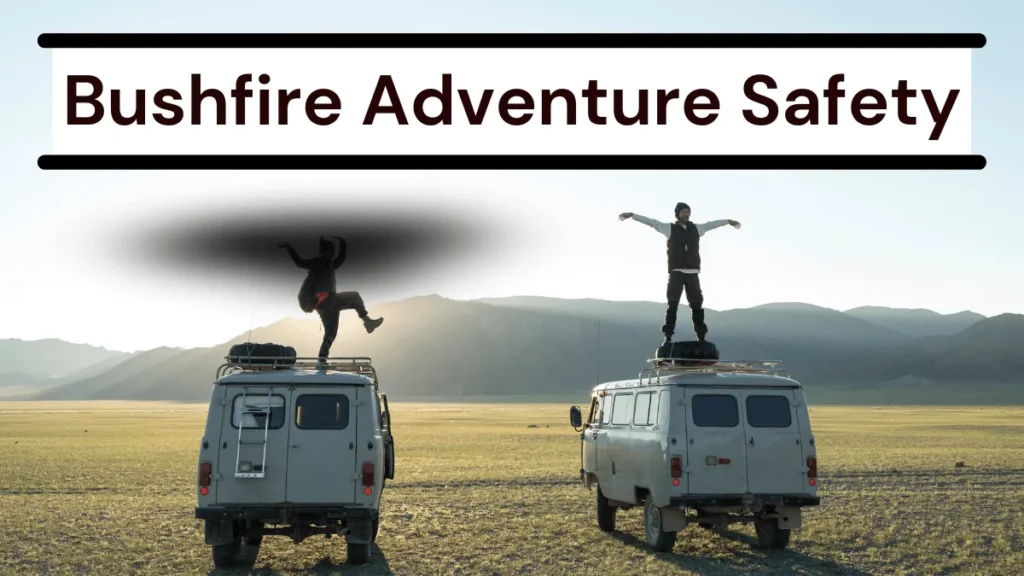
Australia’s bushfire season is lengthening and intensifying, putting outdoor enthusiasts at greater risk. Whether you’re tackling the Blue Mountains or exploring Tasmania’s wilderness, understanding bushfire safety is critical. This SEO-optimized guide covers everything you need to know to plan, prepare, and respond—so you can enjoy the great outdoors with confidence in 2025.
Why Bushfire Safety Matters
- Increasing Severity: Climate change has extended fire seasons and increased extreme fire weather days.
- Remote Risk: Hikers may be far from evacuation centers and mobile coverage.
- Rapid Onset: Bushfires can spread at speeds over 10 km/h, leaving little time to escape.
- Air Quality: Smoke inhalation poses serious health risks, even far from flames.
Pre-Trip Planning
Check Fire Danger Ratings
- Visit the Bureau of Meteorology (BOM) or local state fire service websites each morning.
- Avoid ‘Severe’, ‘Extreme’, or ‘Catastrophic’ days—reschedule if the rating is high.
Research Trail Alerts
- Consult national park websites and local ranger services for trail closures or planned burns.
- Sign up for SMS or email alerts from NSW Rural Fire Service or CFA Victoria.
Plan Escape Routes
- Identify multiple exit points on your map before departure.
- Choose hikes near sealed roads or firebreaks when possible for quick egress.
Share Your Itinerary
- Leave a detailed trip plan with a trusted contact, including:
- Trailhead coordinates
- Expected return time
- Emergency rendezvous points
Also Check: Paddle Into Adventure: Beginner’s Guide to Kayaking & Stand-Up Paddleboarding
Essential Gear for Bushfire-Prone Hikes
| Gear Item | Purpose |
|---|---|
| Satellite Communicator | SOS and two-way messaging when mobile signal is out of range |
| Personal Locator Beacon | One-touch emergency signaling to rescue authorities |
| N95 or P2 Respirator Mask | Filters harmful smoke particles |
| Fire-Resistant Clothing | Lightweight, tightly woven fabrics (e.g., Nomex or Kevlar blends) |
| Headlamp & Spare Batteries | For low-visibility conditions due to smoke or nightfall |
| Emergency Shelter | Compact bivvy or Mylar blanket to protect from radiant heat |
Pro Tip: Pack a whistle, mirror, and flare as low-tech backups for signaling.
Leveraging Technology
Early Warning Apps
- Fires Near Me (RFS/CFA): Real-time fire maps and warnings.
- Emergency+: One-touch call to 000 with GPS coordinates.
- SmokeSense (EPA USA): Crowd-sourced smoke reports and health advice.
Offline Mapping
- Download offline maps via AllTrails, Gaia GPS, or Topo Maps+ to track location without data.
On-Trail Bushfire Safety
Stay Informed
- Check your app at every rest stop for new fire activity.
- Listen for changes in wind direction—smoke swirl signals shifting flames.
Visual & Audio Cues
- Smoke Plumes: A small plume can signal a new ignition.
- Crackling Sounds: Intensifying crackles mean fire approaching.
- Wildlife Behavior: Birds flying low or kangaroos stampeding often precede fire.
Safe Evacuation Protocol
- Don’t Panic: Rapid decisions are critical.
- Move Away from Flames: Head perpendicular to the fire front, ideally downslope and upwind.
- Seek Firebreaks: Driveways, rivers, and cleared roadsides can stall fire spread.
- Use Emergency Shelter: If trapped, lie face-down in a cleared dirt patch covering exposed skin.
Post-Fire Considerations
- Hotspots & Falling Trees: Burnt trees can fall without warning; avoid recently burned areas.
- Ash & Runoff Hazards: Soil erosion and toxic runoff may contaminate creeks—filter drinking water.
- Mental Health: Witnessing devastation can be traumatic—seek support from services like Lifeline.
Training & Preparedness
- Bushfire First Aid: Courses by St John Ambulance cover burns and smoke inhalation treatment.
- Fire-Aware Navigation: Workshops from Bushwalking NSW teach route selection and risk assessment.
- Community Drills: Participate in RFS community fire drills to practice evacuation under stress.
Summary Checklist
- Pre-Trip: Check Fire Danger, trail alerts, share itinerary
- Gear: Satellite communicator, respirator mask, fire-resistant clothing
- Tech: Install Fires Near Me, Emergency+, download offline maps
- On-Trail: Monitor smoke, wind, wildlife; know evacuation routes
- Post-Fire: Beware hotspots, water safety, and mental health
Conclusion
Bushfire safety isn’t optional—it’s a critical component of any 2025 outdoor adventure in Australia’s fire-prone landscapes. By planning meticulously, packing the right gear, and staying vigilant, you’ll reduce risks and enjoy the beauty of the bush with peace of mind. Lace up, gear up, and head out—safely!
